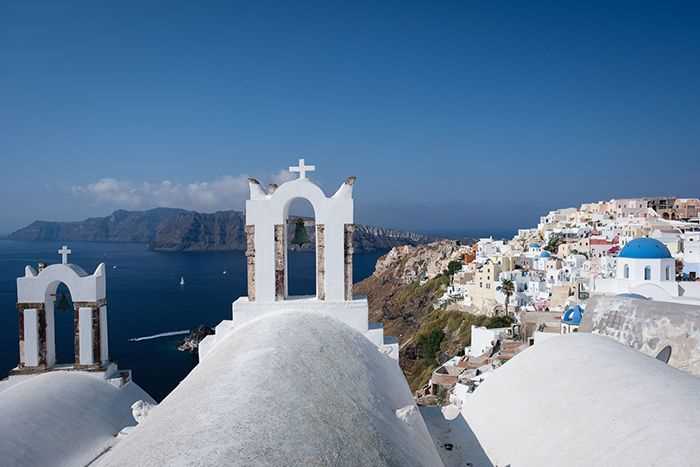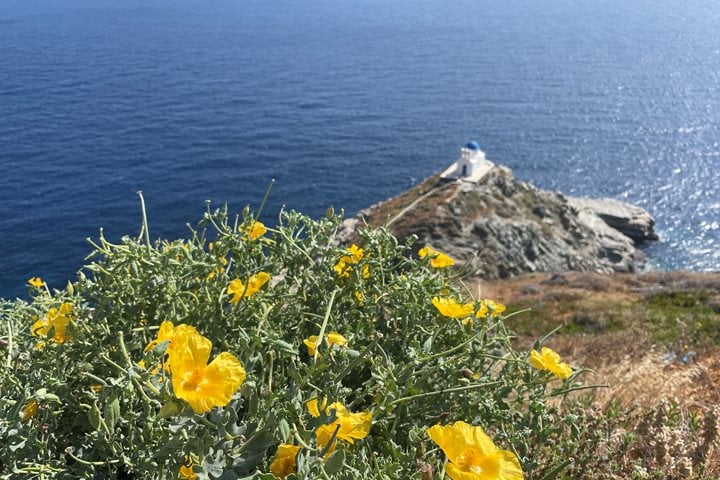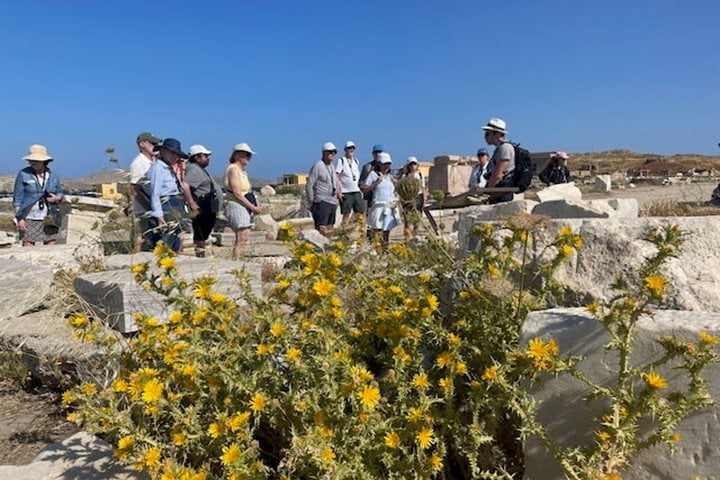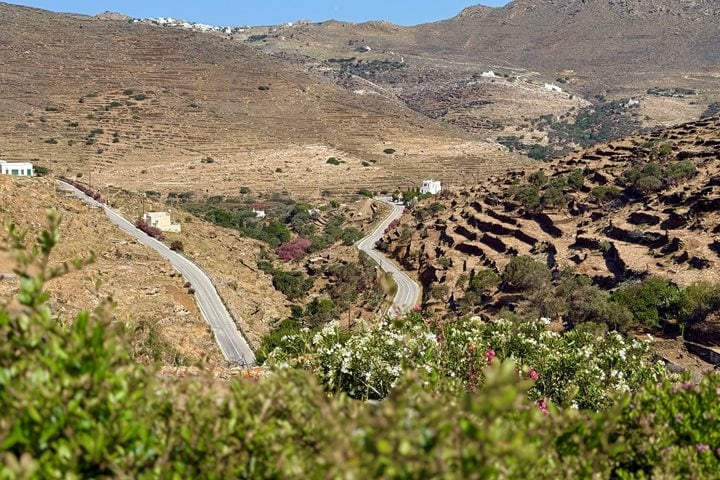Early in the morning we arrived at the island of Santorini, sailing into the caldera as the sun was coming up. The water was calm, the geological formations ‘painted’ but the reflections and the villages with their whitewashed houses hanging on the cliffs.
From the main port we drove to the tip of the island, the picturesque settlement of Oia. Today it is known for its cave houses built into the volcanic rock. They used to be the dwellings of the local sailors but now are mostly summer houses. We had the chance for stunning views of the caldera with its two ‘Kameni’ (burnt) Islands. There was time to explore the settlement with its narrow streets, numerous churches with their characteristic blue domes. Oia is the most artistic village in Santorini and definitely the most photogenic.
After our stay there we drove to Fira for a visit to the Museum of Prehistoric Thera where some of the most important and well-preserved finds of the city of Akrotiri are on display. We saw clay vessels of all different forms and shapes designed to satisfy the needs of ancient daily and ceremonial life, bronze artifacts, charming wall paintings that decorated both public and private buildings, and the unique one-of-a-kind small gold statue of the ibex: the only gold piece ever found in Akrotiri.
The visit to the museum helped us comprehend and appreciate the advanced and sophisticated life of the city and its people in such remote times. With our visit to the actual sight we were able to see the remaining parts of its public buildings, spacious private housing, and its sewage and drainage systems. All evidence of an advanced society that experienced wealth and prosperity and lived a comfortable life filled with beauty—until the volcanic eruption brought it to a sudden death.
The full day exploration was enriched by a very nice meal in a local taverna with traditional Greek and Santorini flavors along with local house wine. We left the island with a beautiful sunset and profound memories.









